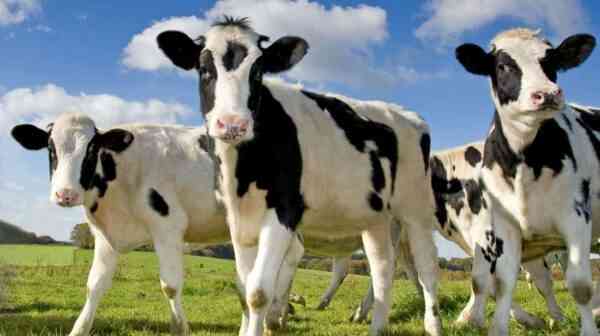What would the world be like without cows, more precisely, what would happen if people had not tamed them back in immemorial times? A number of industries have largely depended on these animals for many centuries. Cows provide milk, meat, hides, and in some cases everything else is used, including manure, horns and hooves. Perhaps we should be grateful to them for the contribution they made to the development of our civilization.
Interesting facts about cows
- They have the same pregnancy as humans, plus -minus a few weeks.
- Since the late 1980s, cow embryos have sometimes been cloned to produce suitable individuals.
- No one knows exactly when cows were domesticated. It is known for certain that at least 6,000 years ago in ancient Egypt they were already tamed, and on the territory of modern Turkey, archaeologists found fossil remains of a domestic cow, which are more than 10,000 years old (interesting facts about ancient Egypt).
- Some diseases that cows are susceptible to can be transmitted to humans, and vice versa.
- There are hornless types of cows in the world.
- In total, about 1.3 billion cows now live on Earth.
- The total weight of all these animals is about 3 times the total mass of all mankind.
- Cow eyes give them a great view, thanks to which it is very difficult for a predator to sneak up on this artiodactyl.
- In India, the cow is revered as a sacred animal. But this almost does not apply to the Indian state of Goa, popular with tourists, since the bulk of its population is Christians, not Hindus (interesting facts about India).
- About 15-18% of all greenhouse gases are emitted into the Earth’s atmosphere because of the cows. Methane is actively produced in their stomachs, which contributes to the greenhouse effect.
- In recent decades, breeding of dwarf cows has become popular in some countries. However, they still reach the waist of an adult man in terms of height at the withers.
- The world’s largest cow, listed in the Guinness Book of Records, lived at the beginning of the 20th century. Its weight was only slightly less than 2.3 tons, and its height at the withers reached 188 centimeters.
- Argentina occupies the first place in the world in the production of beef, and the largest herds, numbering millions of cows, graze on the expanses of this particular country (interesting facts about Argentina).
- These animals are one of the few on Earth that remember people by faces, and not by smells and other distinguishing features.
- They easily remember their name and obediently respond to it.
- To obtain 1 ton of milk daily, a herd of about 50-60 dairy cows is needed.
- The most expensive beef in the world is the meat of Wagyu cows, which bred only in Japan for centuries.
- Like humans, these artiodactyls can cry.
- Before money in one form or another came into use almost all over the world, cows often acted as a measure of value. The larger a man had a herd, the richer he was. For some peoples, wealth was similarly measured in camels, rams and horses (interesting facts about camels).
- Cows cannot distinguish colors, so the saying about bulls and their aggressiveness at the sight of red has nothing to do with reality.
- In Medieval Europe, cows were sometimes judged in the same way as humans. The animal could have been convicted of some crime, such as assault.
- In today’s world, killing a cow is sometimes equated with killing a human. Such a law applies, for example, on the island of Cuba.
- These artiodactyls can feel the Earth’s magnetic field, and when resting, they always settle along its lines, if they have such an opportunity.
- With their lowing they communicate with each other with 11 different intonations.
- The number of cows in South America is almost equal to the population of the entire continent. According to statistics, there are 9 cows for 10 people here (interesting facts about South America).
- If a cow licks you with her tongue, it means she feels sympathy for you.
- Cow nose print as unique as human fingerprints.
- On average, one dairy cow produces about 200,000 standard glasses of milk during a lifetime.
- Cows live about a quarter longer than bulls – about 20 years against 15.
- In terms of population among all mammals, cows occupy the second place on Earth, second only to humans.
